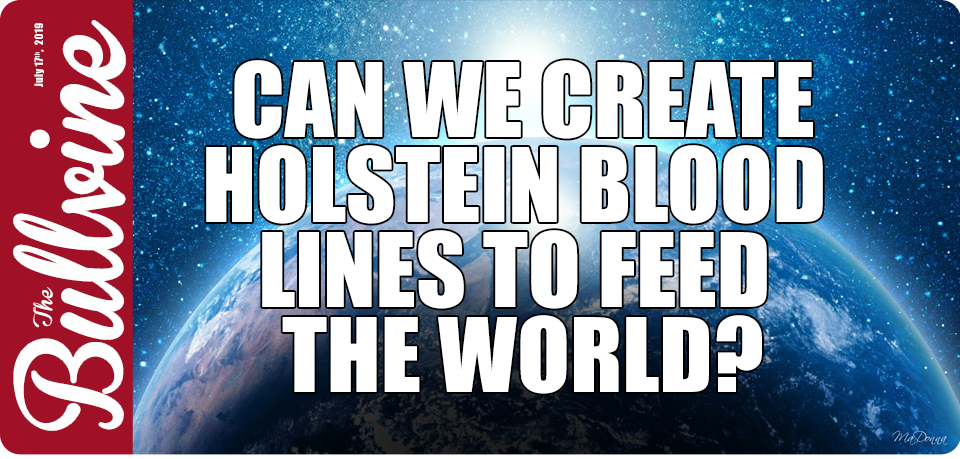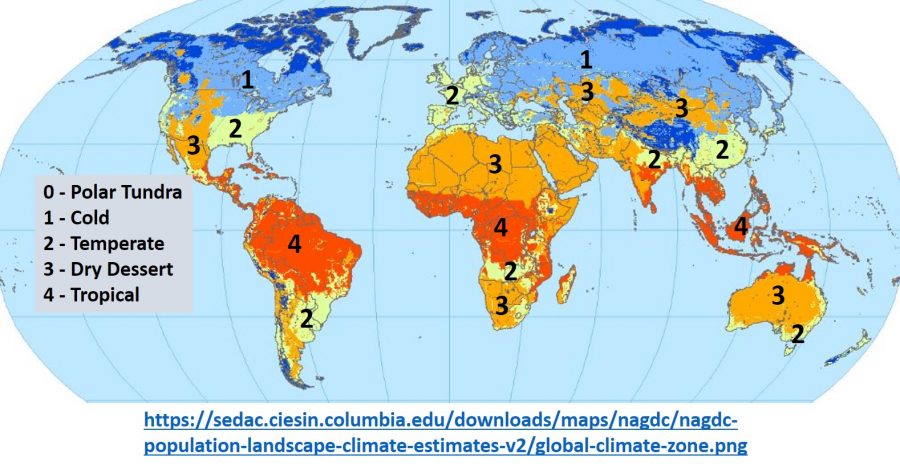Are we missing out on an opportunity to exploit the genetic potential of the Holstein breed worldwide?
Opportunity Knocks
There is already robust global trade among countries involving semen from Holstein bulls and embryos from Holstein cows. This market is competitive and profitable for those that understand its needs and cultures.
Much of this market is in countries that have businesses, organizations and agencies that are members of Interbull https://interbull.org/index. These countries had an estimated 44.5 million milk cows in 2017, based on the UN’s Food and Agricultural Organization. This is a large market, but it leaves out nearly 85% of the world’s milk cows.
Fine Tuning Holsteins
Holstein cows can be found around the world, but when one digs a little deeper to see why there aren’t more, it seems likely that the breed is missing some traits, genes or characteristics that just don’t fit some parts of the world. Maybe there is a lack of heat tolerance or a lack of resistance to some diseases or parasites. Maybe it’s associated with a need in parts of the world for cattle to provide power for ploughing and hauling, but it leaves out nearly 85% of the world’s 290M milk cows.”
Or maybe it is a reluctance of Holstein breeders to break out of there shell of purity to create cattle that will serve much of the world more efficiently. This is no longer a dilemma in some other agricultural species like chickens and pigs because the breeders and breeding companies that serve these species have developed different lines to meet different needs within and among countries. We’ve seen the same thing with soybean breeders where different lines of soybeans have been developed for different latitudes and climatic regions of the world.
Four Cattle Climate Zones
Climate experts have looked at the globe and classified the types of climatic zones that exist worldwide. The experts say we have 5 zones, but only 4 of those are tolerable for cattle. The Polar Tundra may be tolerable someday, but not in the foreseeable future. That means that we have only four climate zones to serve worldwide. Four! That’s right: 4! We even have 3 of those zones in North America. Every continent has at least 3 of the 4 zones. That makes the problem of creating lines for different climate zones simpler.
The global map shows the zones and their locations. We’ve numbered these from 1 to 4 and put numbers in various areas to illustrate the zones within a single country or region. If one looks carefully at North America, South America, Africa, Asia or even Australia, you will see multiples of the four zones.
The Challenge Is Doable
Four lines of Holstein cows! That does not seem too challenging, particularly with the huge amount of global data that we already have and the number of countries around the world that are already engaged in Interbull and similar organizations.
So how do we get there?
First, most of our existing Holstein cows fit well in the Cold Zone (Zone 1). That represents lots of the Northern Hemisphere. We just need to continue focusing on improved health and fertility and enhance components for Line 1.
Zone 2 is temperate, and we’ve generally used housing and cooling technologies to allow Holsteins to do well in these areas. Worldwide there is a lot of temperate land base, and as we see warmer temperatures in the summer in many regions, such as we’ve seen in Europe over the last two years, it may be time to put some heat-tolerant genes in Holsteins in these regions. Some breeders and universities have already done that, but we need to make it easier and simpler to do some crossbreeding to get desirable traits without taking too many generations to be called a “Holstein line”. Today’s genomic tools will allow us to do that more efficiently and effectively, potentially by screening embryos before they are transferred so that we get the most desirable of genes quickly.
The Dry Desert (Zone 3) is filled with Holstein cows today, but there are some traits that could be enhanced for cows in these zones. Solar stress may be their greatest challenge and when one adds that to the internal heat generated by rumen fermentation, it becomes a challenge for the cow to dissipate heat, even in a climate with low humidity. Traits like increased sweat glands, changes in color pattern and even changes in digestion efficiency may be important in these areas. Zone 3 also comprises countries in Africa that have millions of cows. Ethiopia, Sudan, South Sudan and Tanzania collectively have 34 million milk cows! That is a huge marketplace. We need to know a lot more about what traits they need to meet their needs.
The Tropical Zone (Zone 4) is characterized by high humidity and high temperatures year-round. There are very successful dairies in these regions where Holsteins have been crossed with native breeds. They can grow a lot of forage, but often it has lower digestibility. The traits needed in this line are probably already reflected in some of the local crossbreds that one sees. Upgrading those a bit may be a quick way to create this line
Four Holstein Lines – Advantages / Disadvantages
What additional advantages would be derived from creating four Holstein lines?
- We could greatly enhance the ability of various countries to provide high-quality food for their residents while adhering to some of their traditional practices.
- We would introduce greater genetic diversity into the breed and potentially prevent “genetic crashes” that could occur because of limited genome sequences in some DNA segments on some chromosome in the breed.
- We could help our industry be prepared in advance as our climates change and our own farms transition from one zone to another as future generations take over the farm.
- We could help breeders develop some specialized lines for the non-traditional global market – a market which will grow a lot in the next few decades.
- Advances in using genomics to evaluate crossbreds will be a big advantage in such an undertaking.
What are the disadvantages?
- Holstein breeders might begin to look more like hog, chicken and soybean breeders. Is that good or bad? It is probably a bit like reality television. People may not like the concept, but they tune in!
- The Holstein Associations may have to loosen their rules a bit. They have already discovered that there was a 10-20% error rate in sire or dam ID when genomics started being used broadly. Maybe 100% purity needs to be rethought. If you have an 80% chance of winning the lottery, maybe you would still buy a ticket.
Lines Must be Created Through Selection
Can we do this with gene editing? Nope! Most of the traits that are of interest to us are controlled by many, many genes. Gene editing can work well for one gene, but not for 10 or 20 or 30 that might control some trait of interest. We will need traditional breeding with high levels of genomics before mating and after birth of the calves to do this correctly.
Lines are different than line breeding! Linebreeding typically traces back to a bull or cow over multiple generations. Lines are developed by focusing on certain traits and environmental situations to meet the ultimate needs of the farmers and their customers.
Let’s Get Started
Do our Holstein breeders and organizations have the courage to jump into this pond and swim to the other side, not knowing what is beneath the surface? It is a bit like July 20, 1969. “Tranquility base here, The Eagle has landed.” It was the vision of getting to the moon and back that drove this accomplishment. No one knew how to do it when they started. But they started!
Get original “Bullvine” content sent straight to your email inbox for free.













